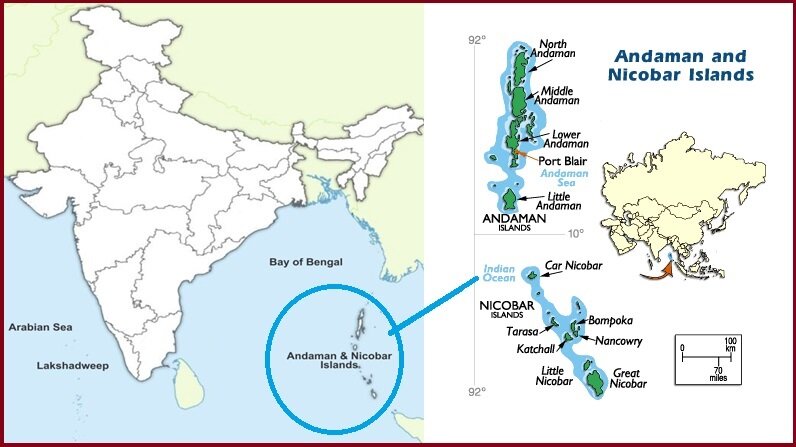Protecting the Sentinelese | 01 Jan 2021
Why in News
Recently, the Anthropological Survey of India (ANSI) policy document warned of threat to the Sentinelese from commercial activity.
- The policy document comes almost two years after American national John Allen Chau was allegedly killed by the Sentinelese on the North Sentinel Island.
Key Points
- ANSI Guidelines:
- Any exploitation of the North Sentinel Island of the Andamans for commercial and strategic gain would be dangerous for its occupants, the Sentinelese.
- The Right of the people to the island is non-negotiable, unassailable and uninfringeable. The prime duty of the state is to protect these rights as eternal and sacrosanct.
- Their island should not be eyed for any commercial or strategic gain.
- The document also calls for building a knowledge bank on the Sentinelese.
- Since ‘on-the-spot study’ is not possible for the tribal community, anthropologists suggest the ‘study of a culture from distance’.
- About the Sentinelese:
- The Sentinelese are a pre-neolithic, negrito tribe who live in North Sentinel Island of the Andamans.
- They are completely isolated with no contact to the outside world. The first time they were contacted by a team of Indian anthropologists in 1991.
- Due to no contact, the census of Sentinelese is taken through photographing the island individuals from distance.
- It has a population of about 50 to 100 on the North Sentinel Island.
- Surveys of North Sentinel Island have not found any evidence of agriculture. Instead, the community seems to be hunter-gatherers, getting food through fishing, hunting, and collecting wild plants living on the island.
- Sentinelese are also listed under Particularly Vulnerable Tribal Groups (PVTGs) by the government of India. The other four PVTGs of the islands are Great Andamanese, Onge, Jarawa, and Shompens.
- They are protected under the Andaman and Nicobar Islands (Protection of Aboriginal Tribes) Regulation, 1956.
- It declares traditional areas occupied by the tribes as reserves, and prohibits entry of all except those with authorization.
- Photographing or filming tribe members is also an offense..
Anthropological Survey of India
- It is a premier research institute for anthropological research in bio-cultural studies.
- It was established in 1945. It is one of the many organizations under the Ministry of Culture. It has headquarters at Kolkata and branches in Port Blair, Shillong, DehraDun, Udaipur, Nagpur, and Mysore in addition to two field stations at Jagdalpur and Ranchi.
- The Survey through its anthropological research contributes in respect of the biological, social and cultural heritage of the country.
- It is also recognised as one of the most advanced centres for research and training in anthropology and allied disciplines.
- Objectives:
- To study the tribes and other communities that form the population of India both from the biological and cultural point of view
- To study and preserve the human skeletal remains, both from modern and Archaeological.
- To collect samples of arts and crafts of the tribes of India.
- To function as a training center for advanced students in anthropology and for administration.
- To publish the results of the research.
Way Forward
- The academics have suggested that the best path forward is a policy of "controlled contact" with these communities instead of a policy of no contact.
- Carefully managed contact to avoid the spread of disease, but also enable the building of trust and providing aid and medical help if needed is the best way.
- Establishing contact with the outside world can also help governments to document their way of life, preserve their culture and their holistic development.

